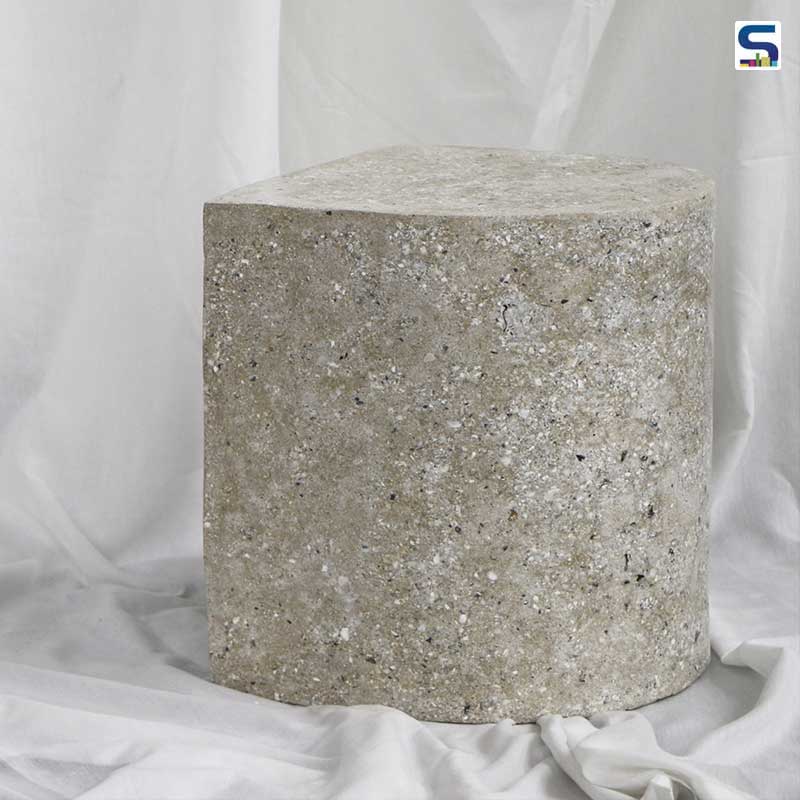
Local Swedish designer Carolina Härdh has converted food waste such as fish bones, rice starch and oyster shells from the kitchen of Gothenburg restaurant Vrå into a side table and dual-purpose stool. The designer created the furniture collection to showcase the substitutes to use food waste which is generally disposed of in landfills. Read the complete story below at SURFACES REPORTER (SR):
Also Read: Architect Upcycles Textile Waste into Decorative Bricks | FabBRICK
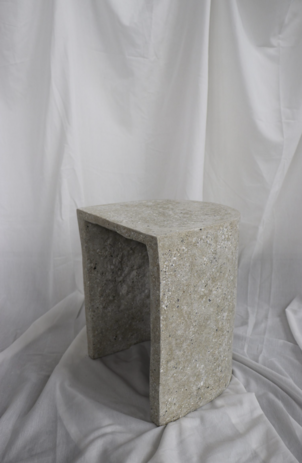 Japanese dishes made from local Swedish fields are converted into versatile furniture pieces for use in the eatery. The goal is to show guests the value of the astonishing value of waste food.
Japanese dishes made from local Swedish fields are converted into versatile furniture pieces for use in the eatery. The goal is to show guests the value of the astonishing value of waste food.
Products Used To Make The Material
The designer created the material which looks like a biobased version of terrazzo from the crushed fish bones, oyster shells and kelp. These seashells give strength to the structure and are equally rich in calcium carbonate. Oyster shells are made of 95 percent of calcium carbonate, which has become a preferred choice among many designers as a durable biomaterial alternative to making cement.
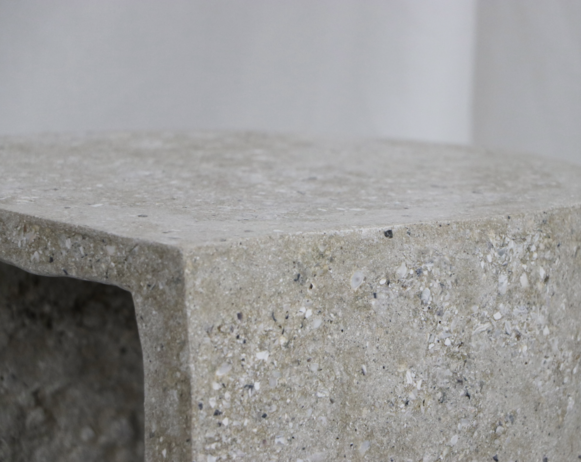
Further, the designer utilized the biomaterial leftovers to create small chopsticks also known as hashioki or used them as a nutrient-rich fertilizer for the Vrå's rooftop farm to avoid any waste from the production process. The restaurant obtains some of its vegetables and herbs from its rooftop plantation.
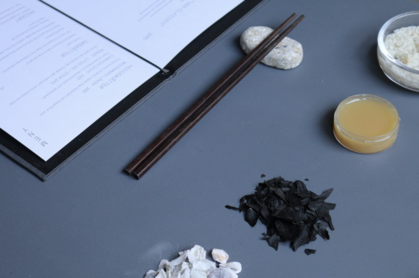 In short, the building works as an ecological system, where nature provides food to humans, and then humans give back it to the natural environment.
In short, the building works as an ecological system, where nature provides food to humans, and then humans give back it to the natural environment.
Also Read: Studio’s In-House Production Waste Converted into 3D Printed Ermis Chair | The New Raw
The Process of Making The Material
Härdh crushed the oyster shells or other seashells and fish bones into chunks of different sizes and then glued them with dried bits of kombu, which is a kind of edible kelp normally used to make soup stock in Japanese cuisine. The combination of these two ingredients creates a speckled texture that appears as terrazzo. The aggregate is fused using fish glue- a natural adhesive made by boiling down the bones of fish- and starch sourced from the water used by the eatery to soak rice.
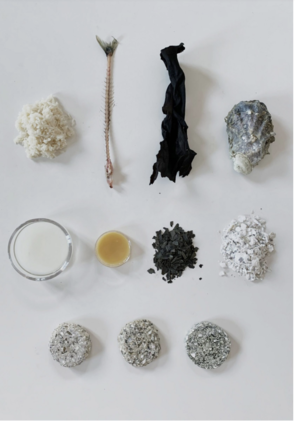 After merging all the ingredients, they look like a concrete dough, which the designer finally cast into two different moulds to create the geometric base and seat of the stool.
After merging all the ingredients, they look like a concrete dough, which the designer finally cast into two different moulds to create the geometric base and seat of the stool.
Furthermore, the biomaterials also work as putty to combine the two distinct portions and to patch up any holes. The designer used leftover bits of material to create oblong pebbles that work as chopstick rests. It showcases
Various Furniture Made out of Food Waste
The food waste is converted into creating a table, stool and chopstick rests. The leftover biomaterial is used to create the chopstick rests that showcases the different scale and applications of the material.
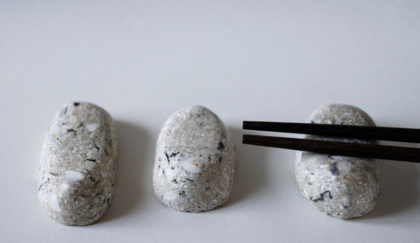
The stool features varied finishes, with the exterior depicting a sharp-edged and finely sanded appearance while the interior has a raw and organic shape. With these furniture pieces, the designer made zero-waste principles to touchable and understandable for the eatery’s patrons.
"Sometimes, it isn't enough to get an understanding of something through a text or an explanation," Härdh said. "We need to understand something through more senses, like when toddlers put things in their mouth to explore how they work. This may add something to the guest's experience, to follow the ingredients from being food on their plate to becoming waste material and interior object,” she added.
Also Read: Bentu Design Upgrades Smashed, Wasted Daily-Use Ceramics into Decorative Bricks
Recyclable Products
As the fish glue can dissolve in water, the final products can be recycled to create new items later on or they can be left to biodegrade. However, the designer has not yet experimented with how much time it would take the material to recycle. "The material is only made of components that come from nature and thus can go back to nature," she explained.
 According to her Oyster shells and fish glue are rich in good nutrients and hence they can be used as fertilizer to enrich the soil. All materials are natural and come from the ocean except rice starch hence they are biodegradable.
According to her Oyster shells and fish glue are rich in good nutrients and hence they can be used as fertilizer to enrich the soil. All materials are natural and come from the ocean except rice starch hence they are biodegradable.
Keep reading SURFACES REPORTER for more such articles and stories.
Join us in SOCIAL MEDIA to stay updated
SR FACEBOOK | SR LINKEDIN | SR INSTAGRAM | SR YOUTUBE
Further, Subscribe to our magazine | Sign Up for the FREE Surfaces Reporter Magazine Newsletter
Also, check out Surfaces Reporter’s encouraging, exciting and educational WEBINARS here.
You may also like to read about:
Hong Kong Experiences Household Plastic Waste Transformed into Community Furniture | HIR Studio
LightArt Transforms its Waste into Pendant Lighting Coil Collection Naturals
Architect Yatin Pandya Recycling Domestic Waste into Building Components
And more…